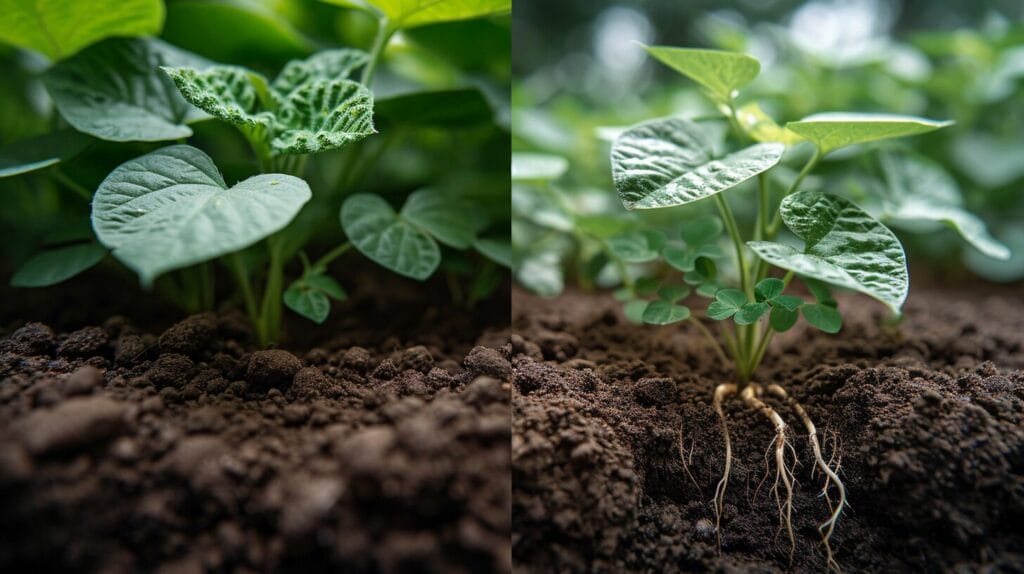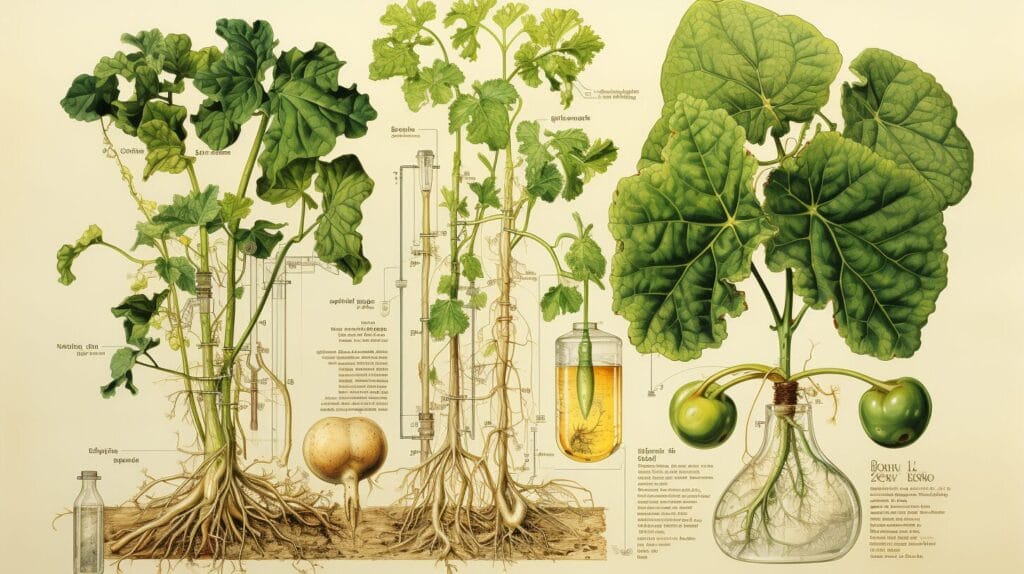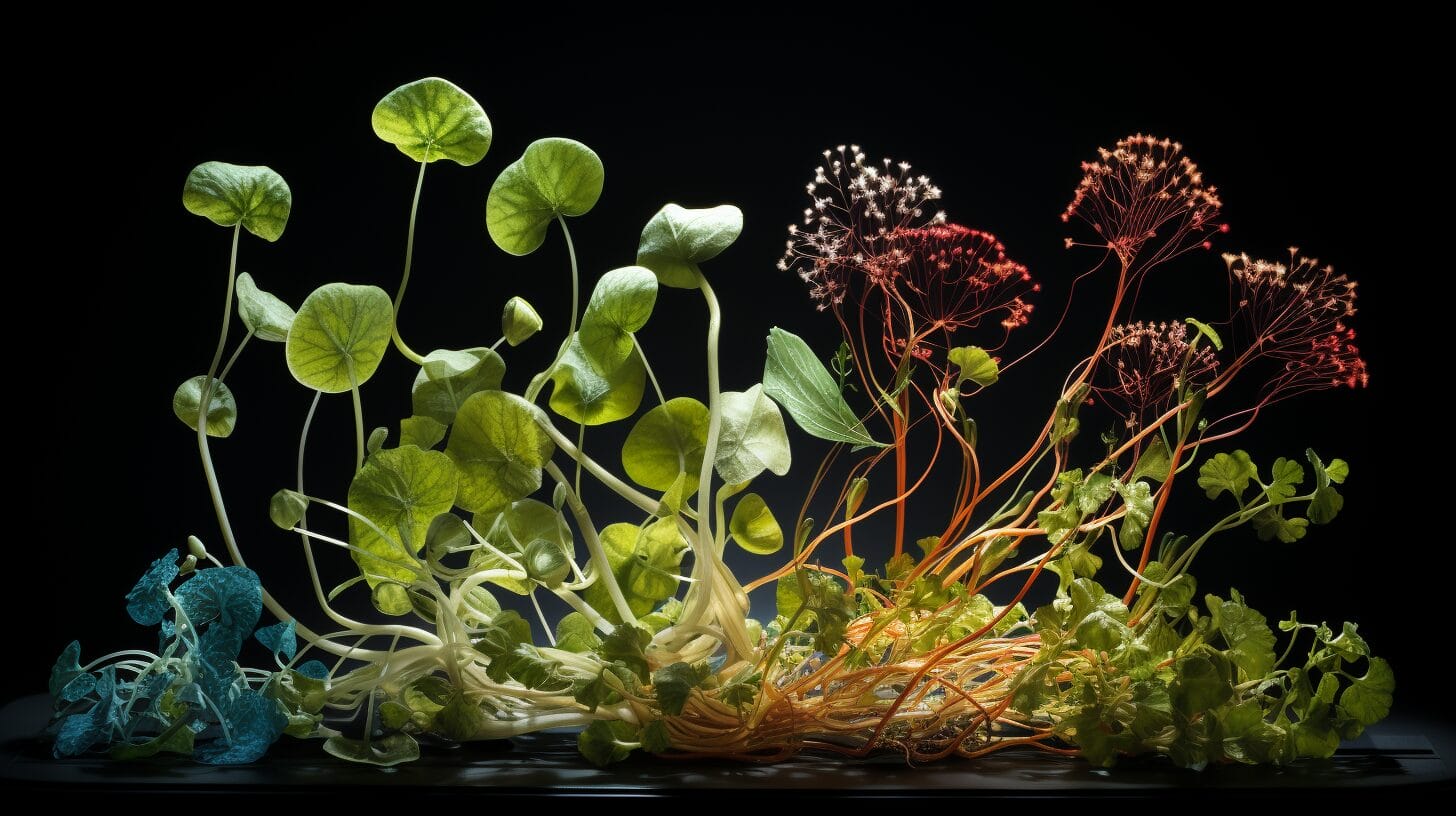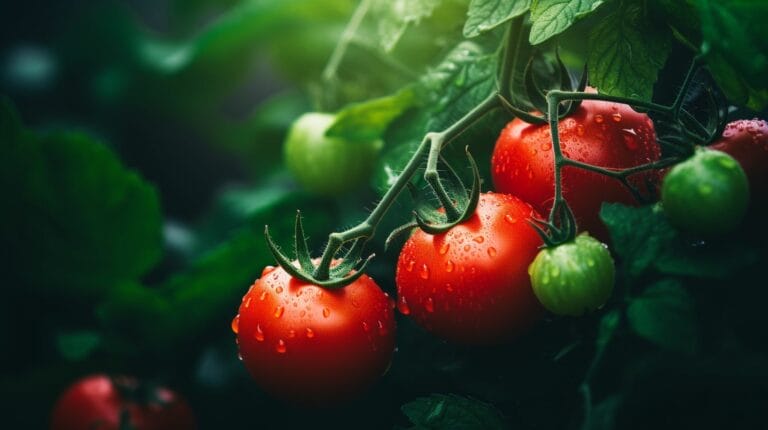When you marvel at the lush bean plants flourishing in your garden, you’re not only relishing in the results of your diligent work, but also witnessing a small piece of a grand narrative in horticulture. A concealed intricacy exists just beneath the surface.
You’ve nurtured these plants, but have you ever considered the foundation of their growth? The root system, a critical yet often overlooked component, is at the heart of this verdant mystery. Do the beans you so carefully tend rely on a single, sturdy taproot, or are they supported by an expansive network of fibrous roots?
This distinction is more than academic—it’s practical knowledge that can shape how you foster your garden. As we unearth the secrets of bean root systems together, you’ll find that the answer not only enhances your understanding of these plants but also sheds light on nature’s broader underground strategies.
Key Takeaways
- Beans have taproots, not fibrous roots, which grow deep into the soil for stability and to access water.
- Taproots like beans anchor the plant and take in moisture and nutrients from deeper soil layers.
- Fibrous roots like in maize form dense networks near the surface to efficiently absorb topsoil nutrients.
- Understanding plants’ root systems, whether taproots or fibrous roots, allows gardeners to better meet their needs.
Understanding the Basics of Plant Root Systems

To fully grasp how plants anchor themselves and absorb nutrients, it’s essential to understand the basics of plant root systems. Just as you cherish your freedom to thrive, plants rely on their roots for survival and growth. Although plants have different root systems, they go through similar processes. Here’s the skeletal information about the root systems:
- A robust primary root that digs deep into the soil, then from the lateral roots, it spreads out to stabilize the plant and increase its reach for sustenance
- Taproots like beans grow deep into the soil for stability and access to water resources
- Fibrous root systems like wheat and marigolds spread out in a dense network close to the surface for efficient nutrient absorption
- Adventitious roots can emerge from unexpected parts of the plant and adapt to unique circumstances
Variations in root systems highlight how plants adapt to meet their needs and thrive in different environments.
Dicot and Monocot Classification: The Connection with Root Systems

Exploring dicots and monocots reveals a direct correlation between these classifications and their respective root systems. These categories aren’t just academic distinctions—they dictate how each plant interacts with the earth.
- Dicots sport a taproot system anchoring the plant that seeks out water and nutrients from below.
- Monocots often have a fibrous root system with a network of slender roots that spread out, offering stable support and maximizing resource extraction from the topsoil.
This root dichotomy is a testament to the evolutionary paths that plants have taken, each finding its way to thrive in a complex ecosystem.
Recognizing whether a plant is a dicot or monocot can give you insights into its lifestyle, its needs, and the best way to care for it if you’re gardening or farming.
Examining Beans as an Example of a Dicot Plant

Bean plants, quintessential dicots, exhibit a robust taproot system. As legume family members, they’re pivotal in sustainable agriculture due to their nitrogen-fixing abilities and serve as a prime example of dicot plant structure.
Their root system, anchored by a sturdy primary root, ensures stability and access to subterranean resources.
The taproot system is a hallmark of dicotyledonous plants, and beans are no exception. When you plant a bean, the seed germinates, and the primary root—your future taproot—pushes through the soil. This taproot grows thicker and longer as it chases the nutrients and moisture deep below.
Unlike fibrous roots that spread out in a mat-like fashion, the taproot digs down with purpose, providing a solid anchor and drawing up sustenance from depths that surface-level roots can’t reach.
As you observe a bean plant’s root system, you’ll notice smaller lateral roots branching off the main taproot. These secondary roots fortify the system, creating a network that helps absorb water and minerals.
This resilient structure is a testament to the adaptive prowess of dicot plants.
The Answer to “Are Beans Taproots or Fibrous Roots?” Explained

Having explored dicot plants’ characteristics and their taproot systems, it’s clear that beans possess taproots. Understanding the root system empowers you to tend to your bean plants more effectively. The primary root develops into a taproot that provides a sturdy anchor and accesses deeper water sources.
To capture your interest, consider these intriguing points about the bean plant’s root system:
- Deep Diving: The bean plant’s taproot can penetrate the soil to great depths, offering stability and access to nutrients that surface-level roots might miss.
- Singular Strength: Unlike fibrous roots, the primary root remains the dominant force, providing a robust anchor point for the entire plant.
- Branching Out: Smaller lateral roots branch out from this primary root, creating a network that supports nutrient uptake and growth.
- Drought Resistance: The taproot system equips the bean plant with a degree of drought resistance, tapping into moisture reserves deep in the ground.
Your bean plant’s type of root, a taproot, is a dynamic feature that interacts with its environment. As you tend to your garden, you’re fostering an ecosystem. Understanding the difference between taproots and fibrous roots can guide you in providing the best care for your plants, ensuring they grow free and strong.
Comparisons of Root Systems: Pea, Beans, Maize, and Grass

Comparing the root systems of peas and beans to maize and grass, it’s evident that the former has taproots, while the latter relies on fibrous root networks. This distinction isn’t just botanical minutiae; it’s about how these plants interact with the earth.
Peas and beans share a rooting strategy. They send down a central taproot that embodies determination and resilience, a symbol of autonomy.
Maize and grasses, with their fibrous roots, create a dense interwoven community beneath the soil. They embrace a collective strategy, embodying interconnectedness and support.
Here’s a comparison to consider:
| Plant Type | Root System |
|---|---|
| Pea | Taproots: A deep central anchor symbolizing depth and independence. |
| Beans | Taproots: Strong, self-reliant, and unwavering in their quest for growth. |
| Maize | Fibrous: A network symbolizing community and shared resources. |
| Grass | Fibrous: A tapestry of roots, embodying collective strength and unity. |
Are Beans Considered Safe for Cats to Eat Compared to Peperomia Plants?
Beans are safe for cats to eat, but peperomia plant toxicity to cats is a concern. While beans can provide some nutritional benefits, peperomia plants can be toxic to cats if ingested. It’s important to be cautious about what plants and foods your feline friends have access to.
Conclusion
Now you know that beans boast a taproot system, characteristic of dicots. They depend on this main root to anchor deep and draw up nutrients, unlike maize and grass with their fibrous roots.
Understanding this root structure allows you to tend your garden wisely, ensuring your beans get the depth and nourishment they need to thrive.
Happy gardening as you nurture these deep-rooted treasures!
Frequently Asked Questions
What is the basic definition of a taproot system in biology?
A taproot system is a type of plant root system that is characterized by a primary root, also known as the taproot, which grows vertically downward. From this main root, smaller lateral roots emerge giving it a tree-like form. The size varies, but some tap roots like in a carrot are quite large and store a considerable amount of carbohydrates.
What is the function of fibrous roots in monocots such as corn and rice?
Fibrous roots aid in the efficient absorption of water and nutrients from the soil due to their widespread, shallow presence. As the name suggests, this category of roots also helps stabilize the plant in the soil, especially in the case of rice and corn plants, where the roots need to support a tall stalk.
Can you provide an answer and explanation on whether beans have a taproot or a fibrous root system?
Beans have a taproot system. After germination, as a central root emerges from the bean’s seed or radicle, it continues to grow and mature as the primary or taproot. As this tap root further develops, it gives rise to smaller lateral roots forming the overall taproot system typical to most eudicot plants.
How does a fibrous root system support the function of photosynthesis?
While the roots themselves do not perform photosynthesis, they play a crucial role in it. Fibrous roots absorb water and minerals from the soil and transport these via the stem to the leaves, which are the primary sites of photosynthesis. The roots store the carbohydrates produced during this process and supply them to the plant when needed.
What kind of homework or science project could involve observing taproot systems?
Science projects involving taproot systems could involve studying and comparing the root systems of different plants, examining how the primary taproot develops and changes over time, or investigating how the taproot system impacts the overall growth and health of the plant. In a classroom or homework setting, students could be asked to draw or label a diagram of a taproot system.







